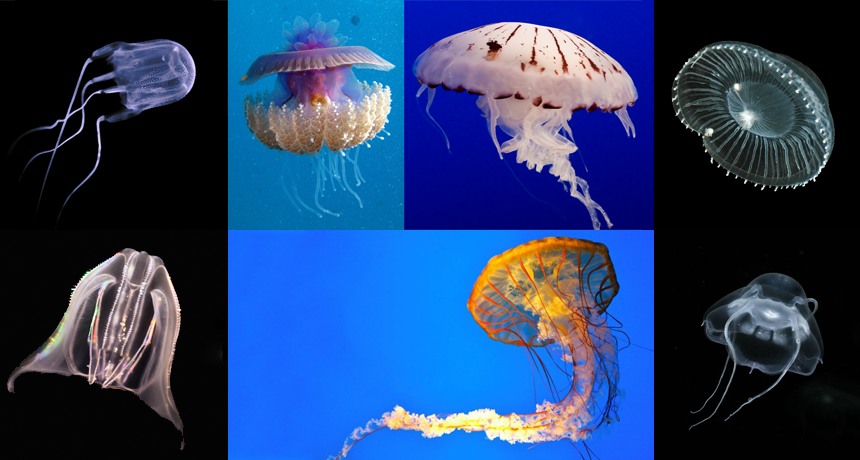cell: The smallest structural and functional unit of an organism. Typically too small to see with the unaided eye, it consists of a watery fluid surrounded by a membrane or wall. Depending on their size, animals are made of anywhere from thousands to trillions of cells. Most organisms, such as yeasts, molds, bacteria and some algae, are composed of only one cell.
force: Some outside influence that can change the motion of a body, hold bodies close to one another, or produce motion or stress in a stationary body.
jellies: (in biology) These are gelatinous animals that drift in water (mostly seawater) or brackish (semi-salty) estuaries. For more than 500 million years, they have moved around the oceans by pumping pulses of water through their jelly-like tissue. Their body often has an umbrella-shaped bell. Trailing from around a central mouth may be many tentacles. Although jellies don’t have brains, they do have a nervous system which can sometimes detect light, movement or certain chemicals. Some members of this family, known as cnidarians, are known as jellyfish. In fact, none are true fish but related to hydras and corals.
muscle: A type of tissue used to produce movement by contracting its cells, known as muscle fibers. Muscle is rich in protein, which is why predatory species seek prey containing lots of this tissue.
nematocyst: Stinging cells in the tentacles of jellyfish, hydra and related animals. The toxins released by these cells help immobilize prey and ward off attackers.
oral: An adjective that refers to things in or affecting the mouth.
plankton: A small organism that drifts or floats in the sea. Depending on the species, plankton range from microscopic sizes to organisms about the size of a flea. Some are tiny animals. Others are plantlike organisms. Although individual plankton are very small, they form massive colonies, numbering in the billions. The largest animal in the world, the blue whale, lives on plankton.
protein: A compound made from one or more long chains of amino acids. Proteins are an essential part of all living organisms. They form the basis of living cells, muscle and tissues; they also do the work inside of cells. Among the better-known, stand-alone proteins are the hemoglobin (in blood) and the antibodies (also in blood) that attempt to fight infections. Medicines frequently work by latching onto proteins.








